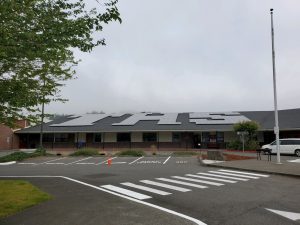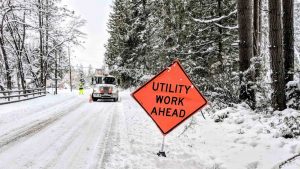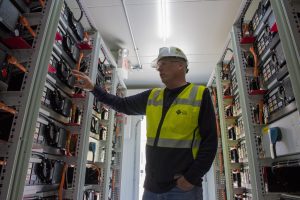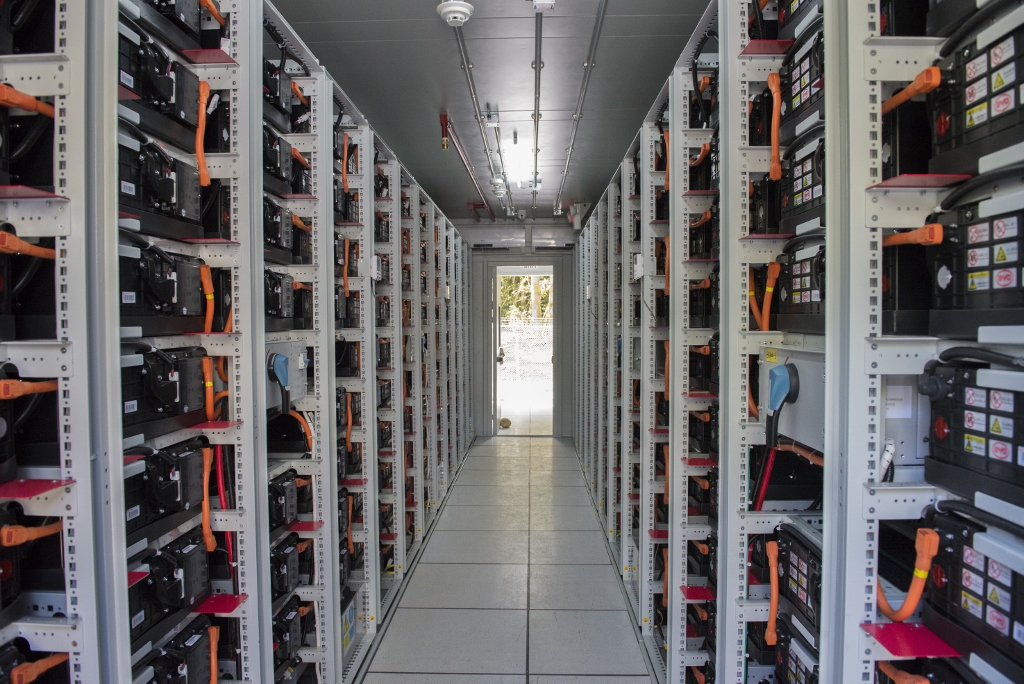Puget Sound Energy (PSE) staff are busy moving an innovative green energy project forward at the Tenino High School, thanks to grants from the Washington Department of Commerce (Commerce). The enterprise means that if a fire, earthquake, severe weather or other natural disaster cuts off power on the main power grid serving Tenino, the high school’s role as an emergency management center will continue, providing important support to the community.

PSE Will Install a Tenino Microgrid with a Battery Energy Storage System
A microgrid is a mini system that delivers energy separately from the main power grid. The planned microgrid in Tenino will use a battery installed at a nearby substation. The battery will store energy from connected solar panels near the school. Stowing energy like this for later use is called a Battery Energy Storage System.
“They can function alongside the main grid, or independently in an ‘island’ mode when disconnected from it (e.g., during an outage),” PSE explains in its webpage release describing microgrids. “During an outage, that system can island the high school and provide temporary back-up power for critical functions – like refrigeration, heating, and interior lights.”
The Tenino installation with solar-plus-storage will be the first utility-scale microgrid in the PSE service area. “We are working on designs and going out to a vendor for battery purchase,” says Robert Zimmerman, PSE project manager, in describing the project’s status. While groundbreaking was originally planned for fall 2022, he says COVID-19 impacted timelines and that date has been adjusted to possibly fall 2024.

Tenino was selected because the high school is an emergency management center and shelter in response to natural disasters or severe weather. “When they lose power, they have maybe only a generator,” Zimmerman says. “The battery and solar array will allow them a longer operating time, for power to stay on.” In addition, the school’s current solar panels installed on its roof will complement the future microgrid.
PSE’s Microgrid Will Aid Communities’ Clean Energy Efforts
This project will help more than just Tenino. It is anticipated that the microgrid could be adapted for other communities. “This will be a good project and will show us the capabilities of it,” Zimmerman says. “Doing these type of projects lets us see what works and what doesn’t work.”
The Tenino microgrid’s primary installation will be a 1MW/2MWh lithium-ion battery at PSE’s Blumaer substation near the school, and solar array on nearby land. PSE plans to install a second battery in the area, at a location to be determined. Zimmerman says the batteries look like a white storage unit, or a series of smaller white boxes, depending upon the model purchased. The battery at the Blumaer substation will be in a fenced area on the current lot. Another battery is also planned in Bucoda.

PSE plans to offer an opportunity for the community to learn more as the installation moves forward. “We will at some point have a town hall meeting,” Zimmerman says. “It will probably be a lot of Q & A.”
This grid modernization updates the power infrastructure to make the energy grid more resilient. And because solar is a renewable energy source, the clean energy project helps PSE find the best ways to reduce greenhouse gas emissions while providing safe and reliable power. “PSE and a lot of other utilities are trying to figure out what works,” Zimmerman says.
The PSE Green Energy Joint Project Benefits Future Generations
The green energy project is a public-private partnership with the DOC, the city of Tenino, the Tenino School District and PSE. Commerce provided PSE $2.7 million in 2020 from thestate’s Clean Energy Fund to help finance the installation. Commerce’s second grant to PSE of $150,000 in 2021 will help PSE analyze and preliminarily design an added renewable hydrogen and/or renewable natural gas-powered generator so even more back-up power can be made available at the school. PSE also provided its own multi-million-dollar investment in the Tenino project.

This joint effort will benefit future generations in many ways. The project provides not only learning opportunities for other communities seeking clean energy options but may also offer information useful to students studying climate issues or doing their own green energy projects. “It’s really interesting to see the new generations coming into the schools and causes they care about,” says PSE Sr. Community Engagement Representative Shannon Glenn. “They have lots of questions about climate change and things that we can do to create a cleaner energy future. We anticipate students will want to know more about the project.”
PSE continues to implement and expand many renewable energy programs, including community-connected solar, customer-connected solar and more. These projects reflect that PSE is working to create a clean energy future not only locally but as part of its larger mission. In fact, PSE set its own aspirational goal to be a Beyond Net Zero Carbon Company by 2045.
Sponsored




















































